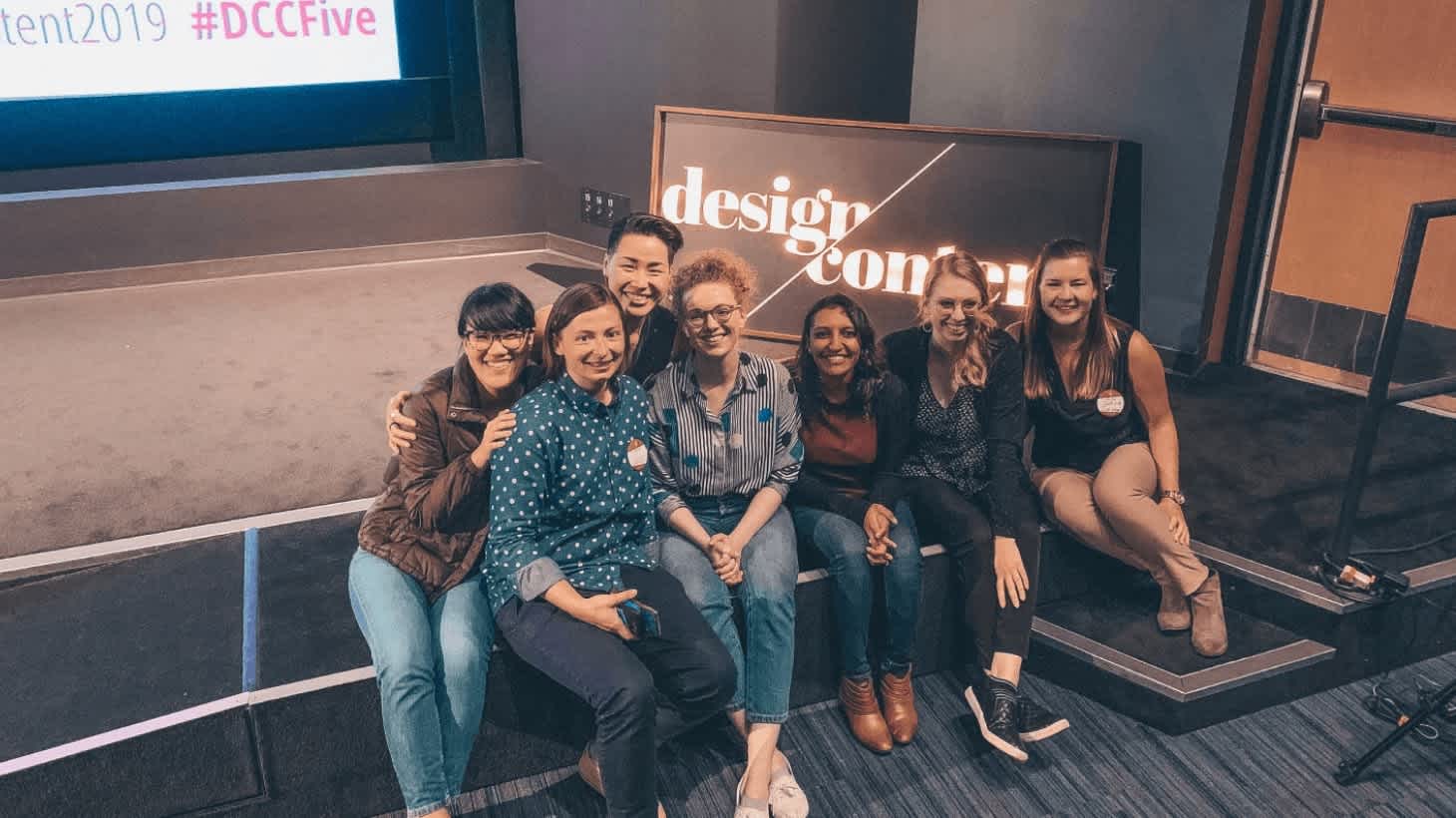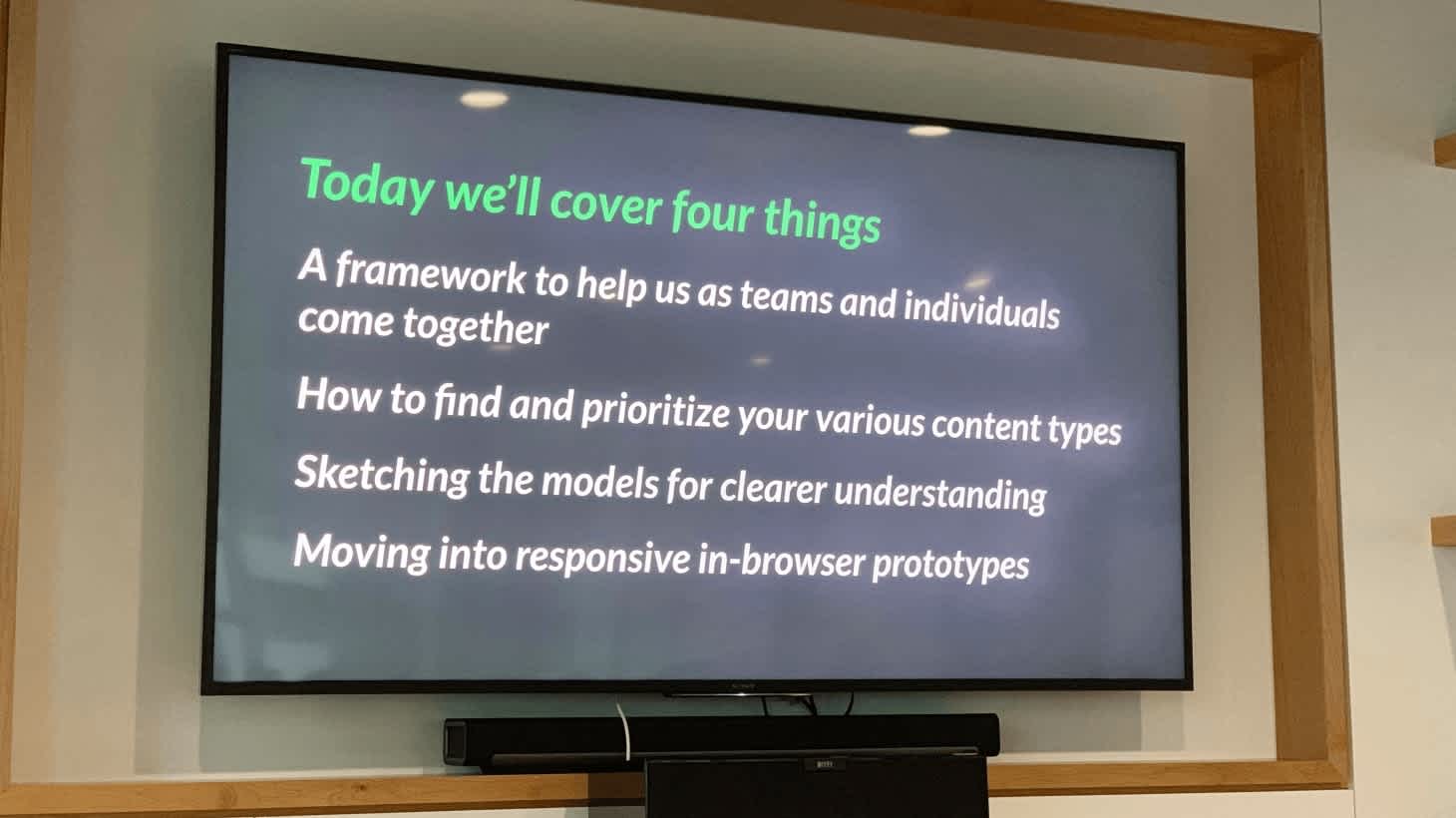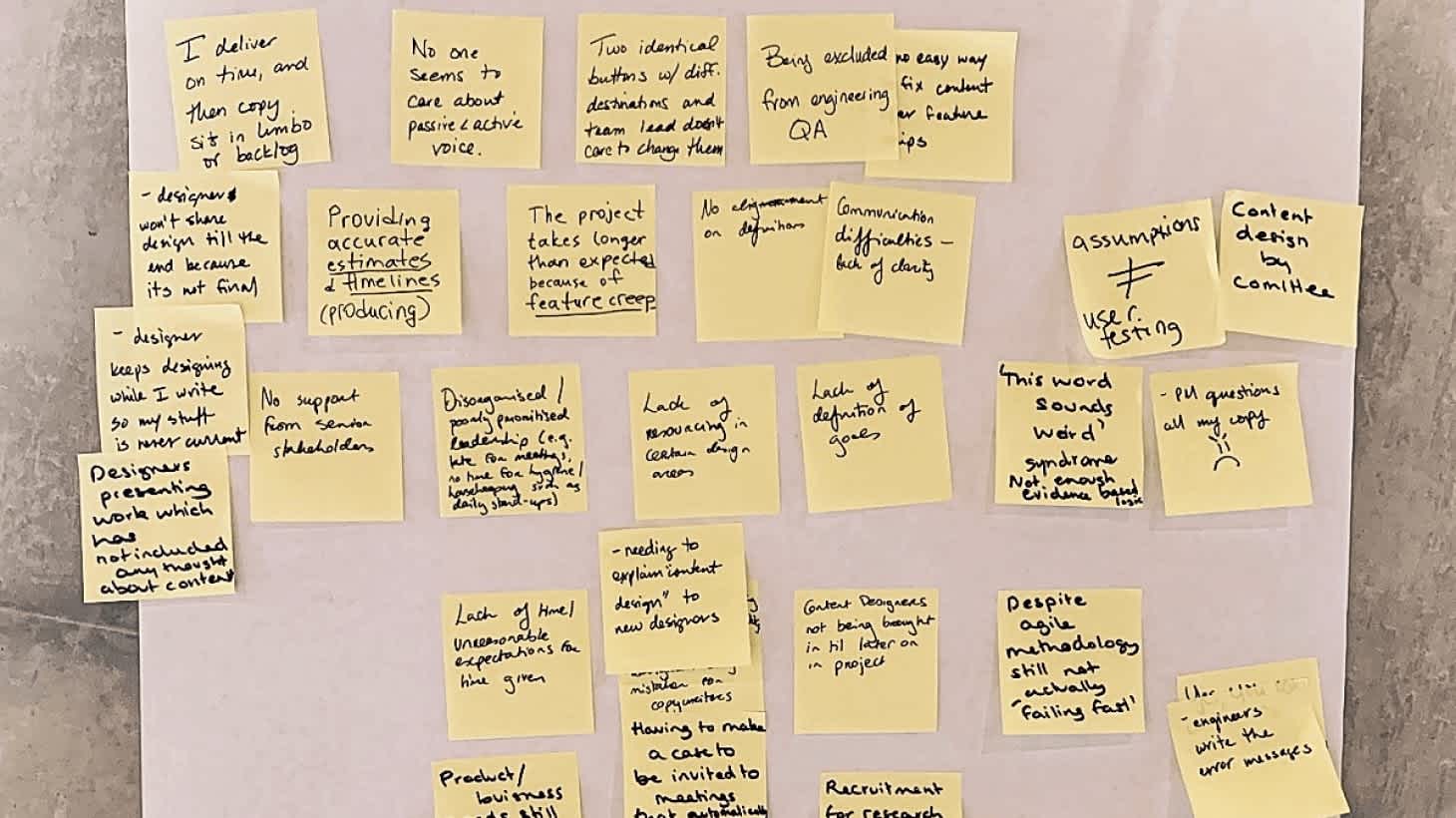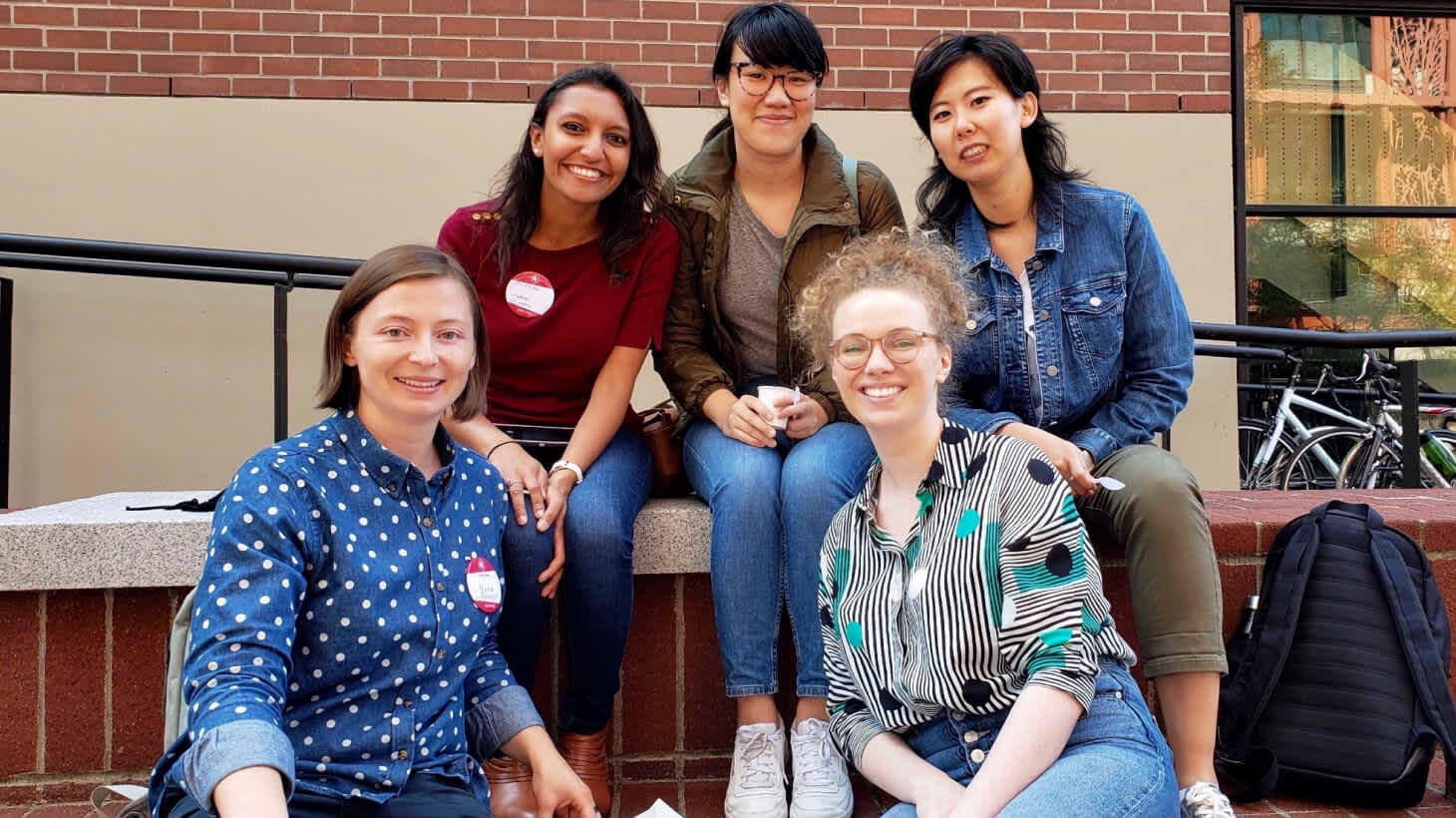← Go back
Design & Content Conference 2019!


What we learned
Running Design & Content Sprints, with Steve Fisher / Founder, The Republic of Quality
Part 1: Insights on running design and content sprints
Steve Fisher talked about putting together a framework to help individuals and teams work together and reach agreements.

At Pieoneers, we’ve adapted the Google Ventures Sprint process to help build better products for people and business. We have also adjusted this process to fit our clients’ needs in terms of planning their overall projects, not just single components. At the workshop, it was interesting to reflect upon the point that Steven Fisher raised that there was a step that Google Ventures was missing. That step was assuming that you can work together as a group. He proposed to solve this missing step by starting a conversation with the group, and asking core questions:
- What do you do?
- What is painful?
- What do you love? - about the service, situation?
- What do you wish for?
Steve shared a story of his work process with the City of Red Deer in Alberta to redesign the city website. He discussed how it took them more than a month to collaboratively agree on goals, design principles, project vision, and services. Steve futher mentioned that his role as a consultant was not to know evertyhing but to find out the answers.
Part 2: Practice the Lightning Design process
We went through the experience of the Lightning Design process (similar to Google Sprint) but condensed to 45 minutes.

We started by putting together a number of "pains." After putting the issues up on the wall, each of us voted for the issues most relevant. There was no discussing when voting. The discussion started when we needed to arrange the issues on the quadrant to identify the ones most valuable to focus on.

This was a truly fun exercise. It was quite interesting to try this work session with the people who have massive backgrounds coming from product companies like Pinterest, Shopify, Intuit, Kickstarter and consulting companies like Fjord and Willowtree. It was a true pleasure and honour to share in the creative thinking process with folks that you wouldn’t otherwise run into on a daily basis. The DCC conference offers quite a unique experience.
Your are not the target with Jon Crowley / Strategy Director, SID LEE
Let's avoid making assumptions:
Step 1. Admit you’re a little narcissistic. You constantly try to adapt people to yourself. That gets in the way of showing empathy. Everything begins with questions. Why do people sign up? Is it a fun experience? How do I get people to use it? What does it look like if it goes well?
Step 2. If you don’t know who it’s for, you don’t know what it is.
Step 3. We underestimate the work it takes to stop drawing on our own experience as the “objective truth.” It is difficult to reject something we have lived. Is it really possible to be more empathetic? How do we really apply empathy?
Step 4. Own your subjectivity. Know your blind spots. This is incredibly difficult but gives you a chance to make better stuff for more people.
Whose page is it anyway? Creating a Content Workflow that serves the audience, with Malaika Carpenter / Founder and Principal Consultant, SayCred Media Group
- Bring audience research into your day-to-day workflow
- Align your team goals with your target audience's goals
- Make really smart guesses about what audiences want
- If you don’t know the audience, it’s hard to provide value
Who we met

Olena treated our city guests to a box of deserts from Pure Bread and everyone shared them together on the steps of the SFU building downtown where the conference took place.

Check out what else is happening with Team Pieoneers:

Jane Friedmann
Marketing Strategist